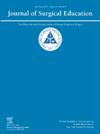Urology Resident Autonomy in the Veterans Affairs Healthcare System
IF 2.6
3区 医学
Q1 EDUCATION, SCIENTIFIC DISCIPLINES
引用次数: 0
Abstract
Purpose
Surgical resident autonomy in procedures has been eroding over time, due to multiple factors that include duty hour restrictions, focus on operating time, complication rate, and trust among supervising physicians. This study examines whether urology residents at the Veterans Affairs hospitals (VA) have experienced decreased surgical autonomy and contributing factors.
Methods
The national VA Surgical Quality Improvement Program (VASQIP) was queried for the most common urologic procedures between 2004 to 2019 with resident involvement. The most frequent surgeries were transurethral resection of prostate (TURP); transurethral resection of small, medium, or large tumor (TURBT); photo vaporization of prostate, scrotal surgery, and ureteral stent placement. The cases were stratified by resident involvement: attending as primary (AP), attending and resident (AR), resident as primary (RP).
Results
93,756 urology cases were selected from 2004 to 2019. The above procedures accounted for 76.5% of all urologic cases. The percentage of RP cases decreased from 44.4% of cases in 2004 to 25.1% in 2019. Reduction in RP cases was seen in all of the 7 examined urology cases. Cases with resident involvement had patients with more medical comorbidities. Mean operative times were not significantly different. The 30-day composite complications and 30-day return to operating room were greatest for AR. Postoperative morbidity and all-cause mortality were not significantly different.
Conclusions
Urology resident autonomy has decreased within the VA healthcare system over the past 15 years. Mean operative times and postoperative complications are not significantly different in cases with residents as primary surgeon.
退伍军人事务医疗保健系统中的泌尿科住院医师自主权。
目的:由于值班时间限制、对手术时间的关注、并发症发生率以及督导医师之间的信任等多种因素,外科住院医师在手术过程中的自主权随着时间的推移而受到侵蚀。本研究探讨了退伍军人事务医院(VA)的泌尿科住院医师是否经历了手术自主性下降及其影响因素。方法:对2004年至2019年住院医师参与的国家VA外科质量改进计划(VASQIP)中最常见的泌尿外科手术进行查询。最常见的手术是经尿道前列腺切除术(TURP);经尿道小、中、大肿瘤切除术(TURBT);前列腺光汽化,阴囊手术,输尿管支架置入。病例按住院医师参与分层:主诊(AP)、主诊兼住院医师(AR)、住院医师主诊(RP)。结果:2004 - 2019年泌尿外科病例93756例。以上手术占泌尿外科病例的76.5%。RP病例的比例从2004年的44.4%下降到2019年的25.1%。7例泌尿科病例中RP发生率均有所降低。住院医师参与的病例患者有更多的医疗合并症。平均手术时间无显著差异。AR的30天复合并发症和30天返回手术室发生率最高,术后发病率和全因死亡率无显著差异。结论:在过去的15年里,泌尿外科住院医师的自主权在VA医疗保健系统中有所下降。住院医师为主刀医师的平均手术时间和术后并发症无显著差异。
本文章由计算机程序翻译,如有差异,请以英文原文为准。
求助全文
约1分钟内获得全文
求助全文
来源期刊

Journal of Surgical Education
EDUCATION, SCIENTIFIC DISCIPLINES-SURGERY
CiteScore
5.60
自引率
10.30%
发文量
261
审稿时长
48 days
期刊介绍:
The Journal of Surgical Education (JSE) is dedicated to advancing the field of surgical education through original research. The journal publishes research articles in all surgical disciplines on topics relative to the education of surgical students, residents, and fellows, as well as practicing surgeons. Our readers look to JSE for timely, innovative research findings from the international surgical education community. As the official journal of the Association of Program Directors in Surgery (APDS), JSE publishes the proceedings of the annual APDS meeting held during Surgery Education Week.
 求助内容:
求助内容: 应助结果提醒方式:
应助结果提醒方式:


